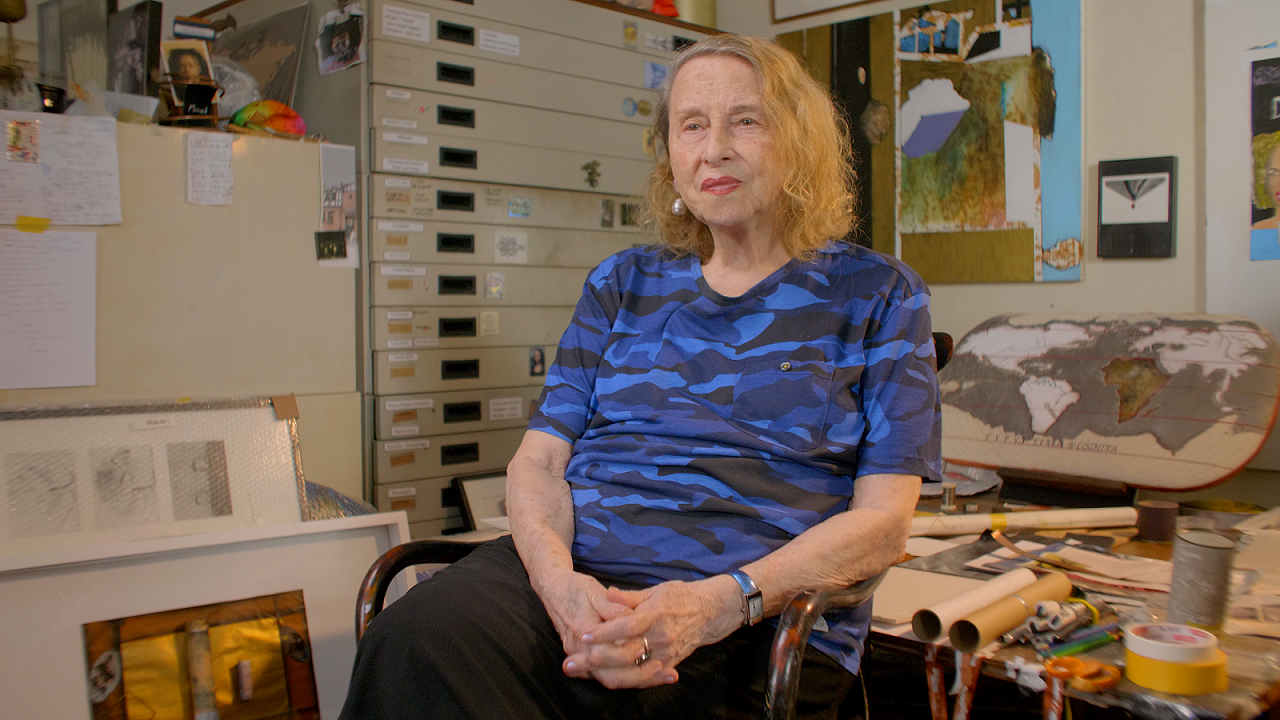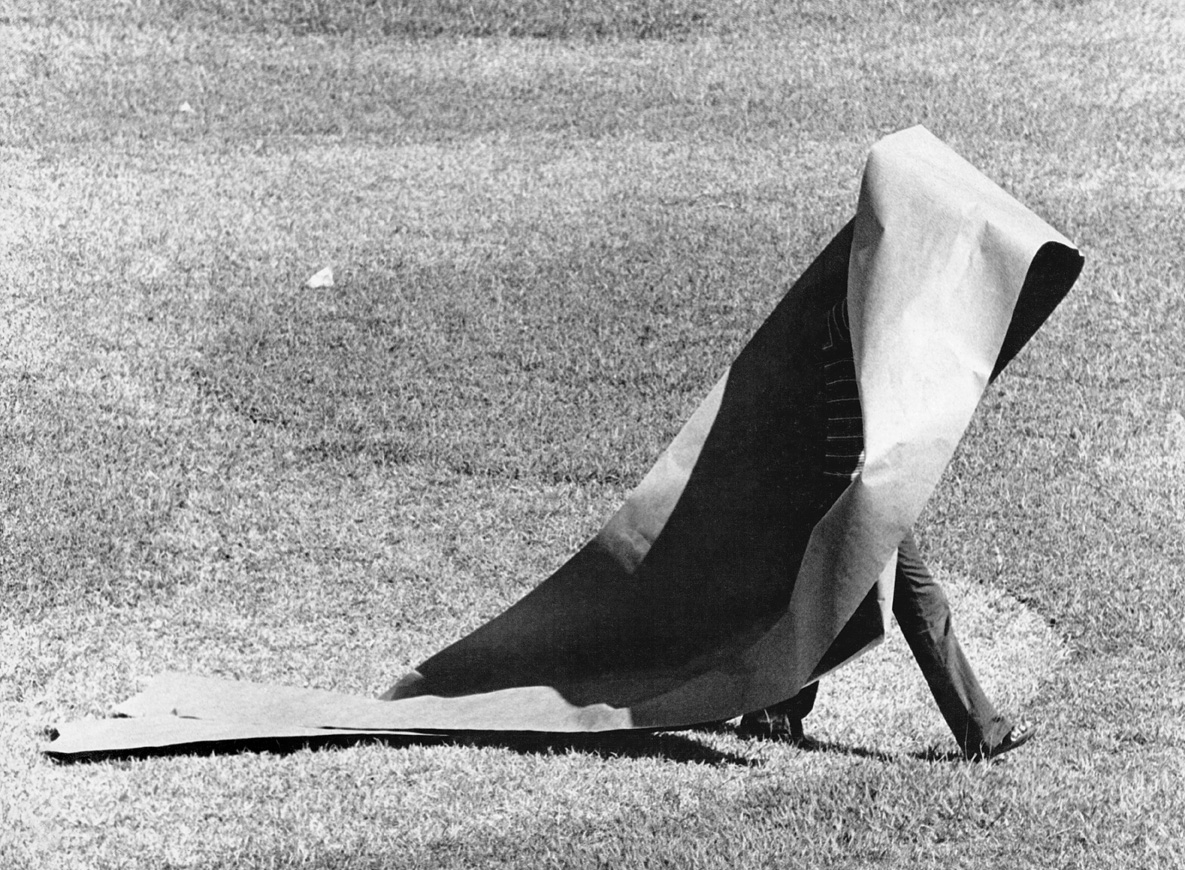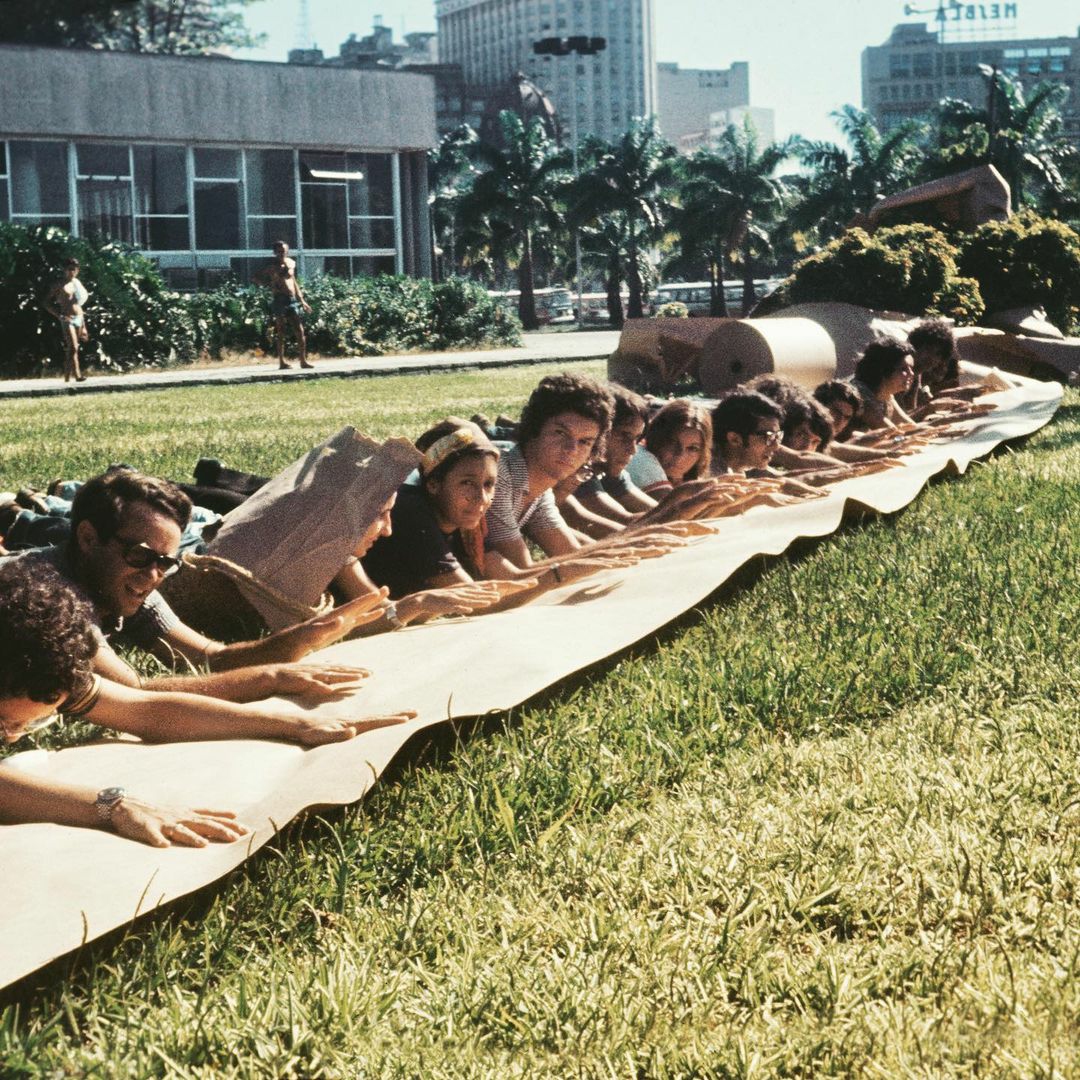The Sunday Supplement of the Jornal do Brasil and NeoConcretism
03/16/2023
Leia este artigo em português aqui.
To look at SDJB and its graphic solutions is to see the principles proposed by Brazilian concrete and neo-concrete art acting directly upon the real world, since the newspaper is linked to a function: it is a vehicle for information.
Published between 1956 and 1961 in Rio de Janeiro, the Sunday Supplement of the Jornal do Brasil (SDJB) was a newspaper insert devoted to the cultural manifestations of its time. Specifically, in the field of visual arts, it mainly promoted and debated concretism and neoconcretism. Cultural supplements played a relevant role in Brazil’s art scene of the 1950s, in regard to the critical debate of the time. SDJB stood out in its early years for its design, which changed weekly. Consequently, its most varied designs were related to neoconcretism itself.
Journalist and poet Reynaldo Jardim (1926-2011) was responsible for the radio show ‘Suplemento Dominical do Jornal do Brasil.’ Upon the invitation to publish a column entitled ‘Literatura Contemporânea’ [Contemporary Literature] in the print version of the newspaper, he sought to gain more and more space, until it became a homonymous cultural supplement of the radio show. The first publication of SDJB was made on June 3, 1956. In December of that year, the I Exposição Nacional de Arte Concreta [1st National Exhibition of Concrete Art] was held in São Paulo, traveling later to Rio de Janeiro, in February 1957.1.
Despite being recalled for its approaches centered on visual arts and literature, SDJB was also dedicated to dance, theater, music, philosophy, cinema, graphic arts, architecture, and urbanism. It was common for other supplements to comment on or respond to SDJB articles in subsequent days. The responses were followed by replies, and the space destined for this debate of ideas among supplements and their authors became a column entitled "Tabela," which debuted in the October 19, 1958 edition. Its first appearance was signed by J.F., alluding to the journalist Janio de Freitas (1932-). Janio was working in the editorial office of Jornal do Brasil (JB) when, at the end of 1958, he was transferred to the Sports section. The following year, he would become the editor-in-chief of JB and would be responsible for the graphic reform of the newspaper.
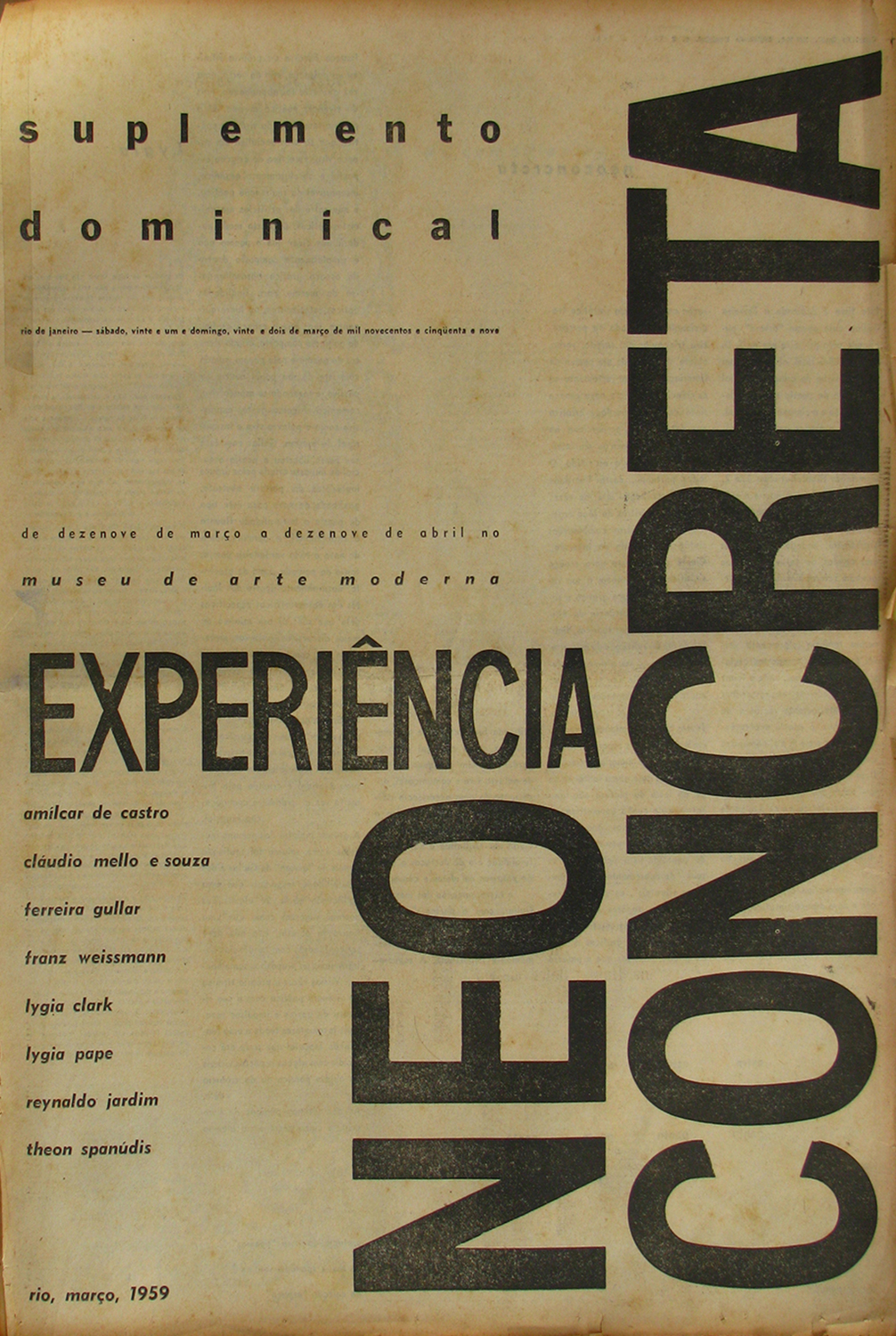
Ferreira Gullar (1930-2016) worked as copy desk chief of JB and also wrote for SDJB since October 1956. At first, he signed the visual arts page together with Oliveira Bastos, until he became responsible for it. Gullar was dismissed from the newspaper in September 1958 and rehired in March 1959, when he returned to work for SDJB only.2. During this period of "distancing", as editor of SDJB, Jardim invited Gullar to collaborate in the supplement by writing in Tabela, but without crediting him in the production.
Changes in the Layout
At the time, newspapers were quite visually loaded, using "threads" to separate the columns and frame the articles. Specifically, the Jornal do Brasil was known for being an advertising newspaper. In the initial period of the publication, in 1956, the title "Sunday Supplement" was printed in italics and the name "JORNAL DO BRASIL" was in capital letters, in white on a black background. The articles were separated from each other framed by threads. The changes in the layout of SDJB intensified in 1957, when, on June 23, the entire edition of the supplement stopped using threads, except for page six, which had a standard layout.
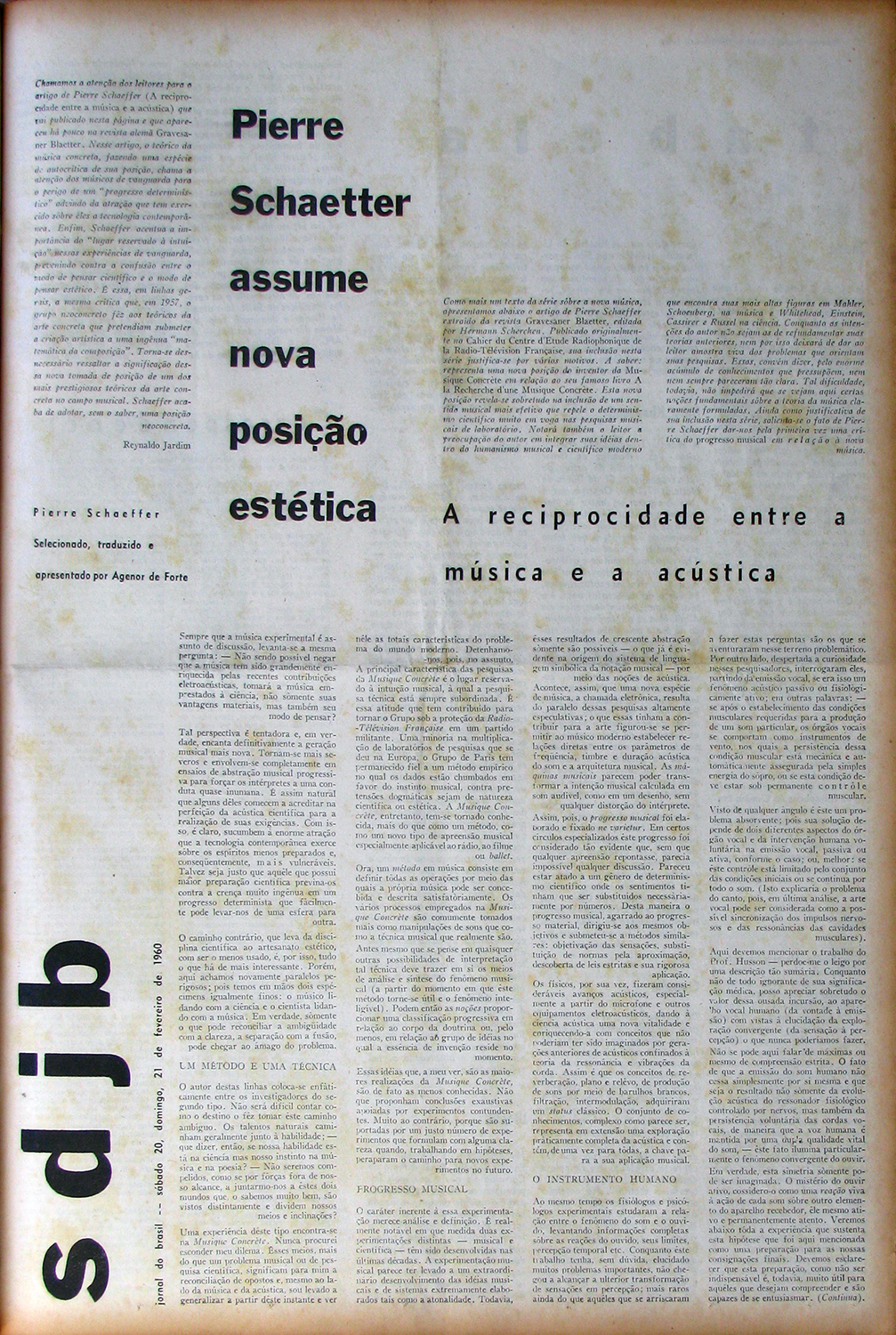


The first change in the typology used in the title occurred on June 29, 1958, abandoning the use of italics: "Sunday Supplement" was printed in lowercase and bold, and "JORNAL DO BRASIL" in capital letters, but in a smaller size. By then, the design of SDJB was already quite refined, as it had been changing weekly since 1957. On February 6, 1960, the title printed in the supplement became its own initials, in lower case: sdjb.
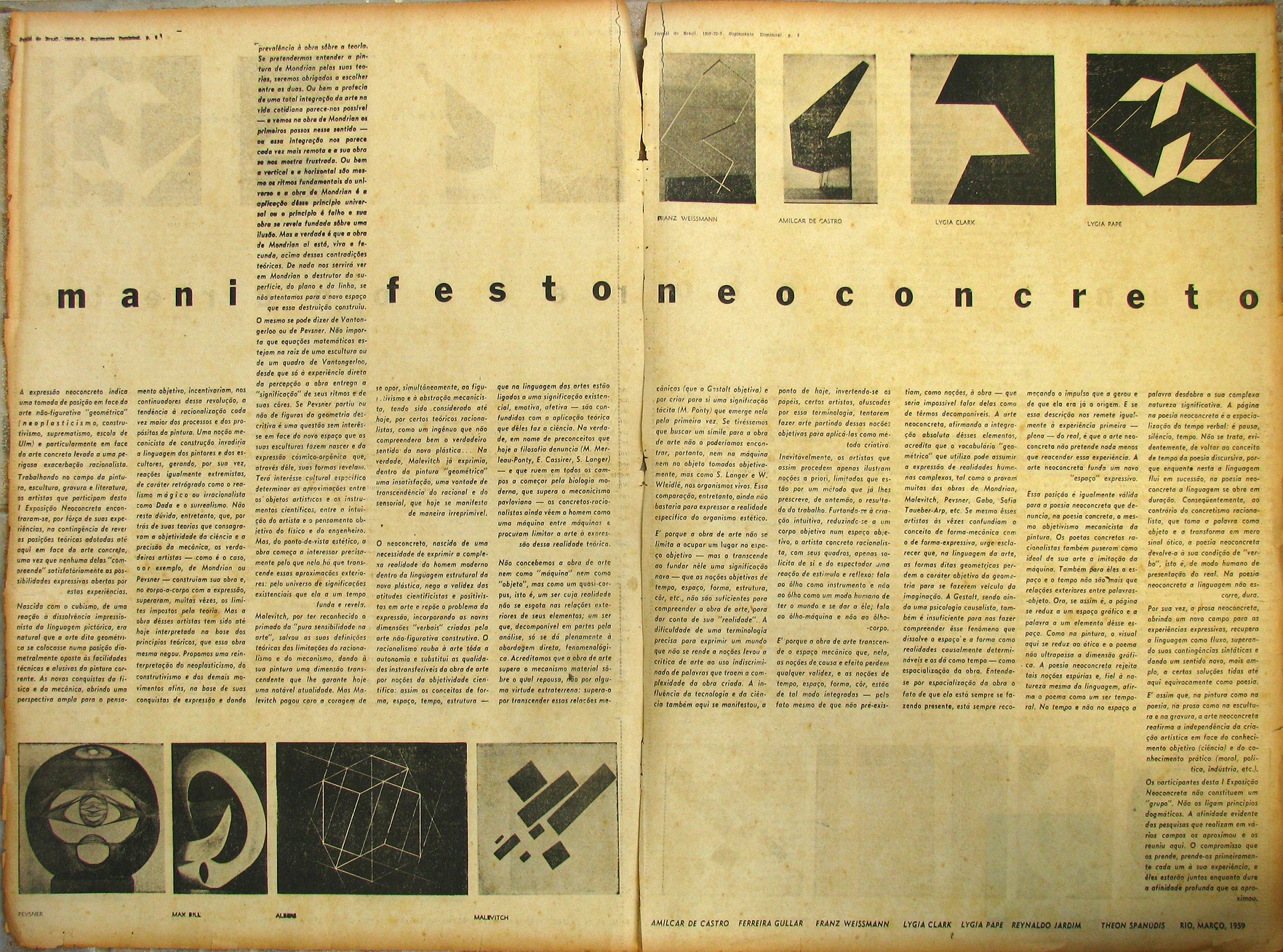

One of its main traits was the five text columns on the pages, with justified alignment and with the last line of the paragraph aligned to the right. Titles were arranged horizontally or vertically. Horizontally, they could take up a page or the whole width of a spread. The latter option meant that the newspaper reader, accustomed to reading a vertical page, was faced with a horizontal composition.3 And lastly, the use of blank spaces allowed the reader to see the newspaper itself, no longer as a background or simply as a support but as a presence. The contrast between the empty spaces left intentionally on the pages and the spaces filled with text columns, titles and images, gave SDJB a special design, different from the rest of the newspaper.
Aware of these elements, Jardim laid out the newspaper in various geometric compositions. He approached the use of white, black, and shades of gray through empty spaces, black and white images, and text blocks. To look at SDJB and its graphic solutions is to see the principles proposed by Brazilian concrete and neoconcrete art acting directly upon the real world, since the newspaper is linked to a function: it is a vehicle for information.
On June 23, 1957, the cover of SDJB published the title “CISÃO NO MOVIMENTO DA POESIA CONCRETA” [Division in the Concrete Poetry Movement], all in uppercase, and right below it, two texts: “Poesia concreta: experiência intuitiva” [Concrete Poetry: Intuitive Experience], signed by Ferreira Gullar, Oliveira Bastos, and Reynaldo Jardim, and on the right: “Da fenomenologia da composição à matemática da composição” [From the Phenomenology of Composition to the Mathematics of Composition], by Haroldo de Campos. In the text, Gullar, Jardim, and Bastos defended the concrete poem as an “everyday, affective, intuitive experience.” Also in this issue, was a survey conducted by Teresa Trota, entitled “Alfredo Volpi na berlinda” [Alfredo Volpi in Focus], which collected the opinion of artists and critics on the work of this painter.4 The fruit of this division would later end up in the gathering of some artists under the name of a new movement: neoconcretism.
The Dissemination of the First Neo-Concrete Exhibition
SDJB widely publicized the concrete movement in Brazil, published texts on the European abstract geometric avant-garde, and, finally, disseminated neoconcretism. The cover of the edition of March 21, 1959, contained no articles and functioned more as a poster to announce the exhibition opening at the Museu de Arte Moderna in Rio de Janeiro, than as a page in a proper newspaper.5 The word 'EXPERIENCE' appeared horizontally, at the page’s center height, and 'NEO CONCRETE' was laid out vertically, aligned to the right margin of the page. In a smaller size, with less prominence, were the names of the participants, the place, and the period of the exhibition.6 Four artists—Amilcar de Castro, Franz Weissmann, Lygia Clark, and Lygia Pape—and three poets—Ferreira Gullar, Reynaldo Jardim, and Theon Spanudis—participated in the First Neoconcrete Exhibition. At the time, Gullar was poet, visual artist, and the theorist of the group. Therefore, three members of the neo-concrete group worked in the Jornal do Brasil.
Amilcar de Castro (1920-2002), who had worked as JB's layout designer with Waldir Figueiredo, left the newspaper shortly after Gullar's departure, at the end of 1958. The following year, he collaborated for less than two months in the design of SDJB. Until then, it was Reynaldo Jardim, its editor, who designed SDJB. According to Janio de Freitas, when the design created by Amilcar did not fit, Reynaldo would make changes to his drawings directly in the workshop.7
This edition also promoted the Balé Neoconcreto [Neoconcrete Ballet], a show composed of a square and a rectangle that moved orthogonally across the stage to the rhythm of neoconcrete song. Its authors were Reynaldo Jardim and Lygia Pape. The author of the music that accompanied the show was Gabriel Artusi, a young composer and pianist born in Genoa—an interview with him was featured on page six.8 Decades later, Jardim declared in an interview that Gabriel Artusi did not exist, that he had composed the song himself and created the character of the Italian composer, and he had published the interview to validate his existence.9
SDJB also published some articles signed with pseudonyms. In a 2009 interview, Assis Brasil (1929-2021) revealed that Teresa Trota was a collective pseudonym used in the Supplement.10 When questioned, journalist Janio de Freitas said he did not remember the name Teresa Trota, but confirmed that pseudonyms were used and he had already published under the name Forjaz Forjan.
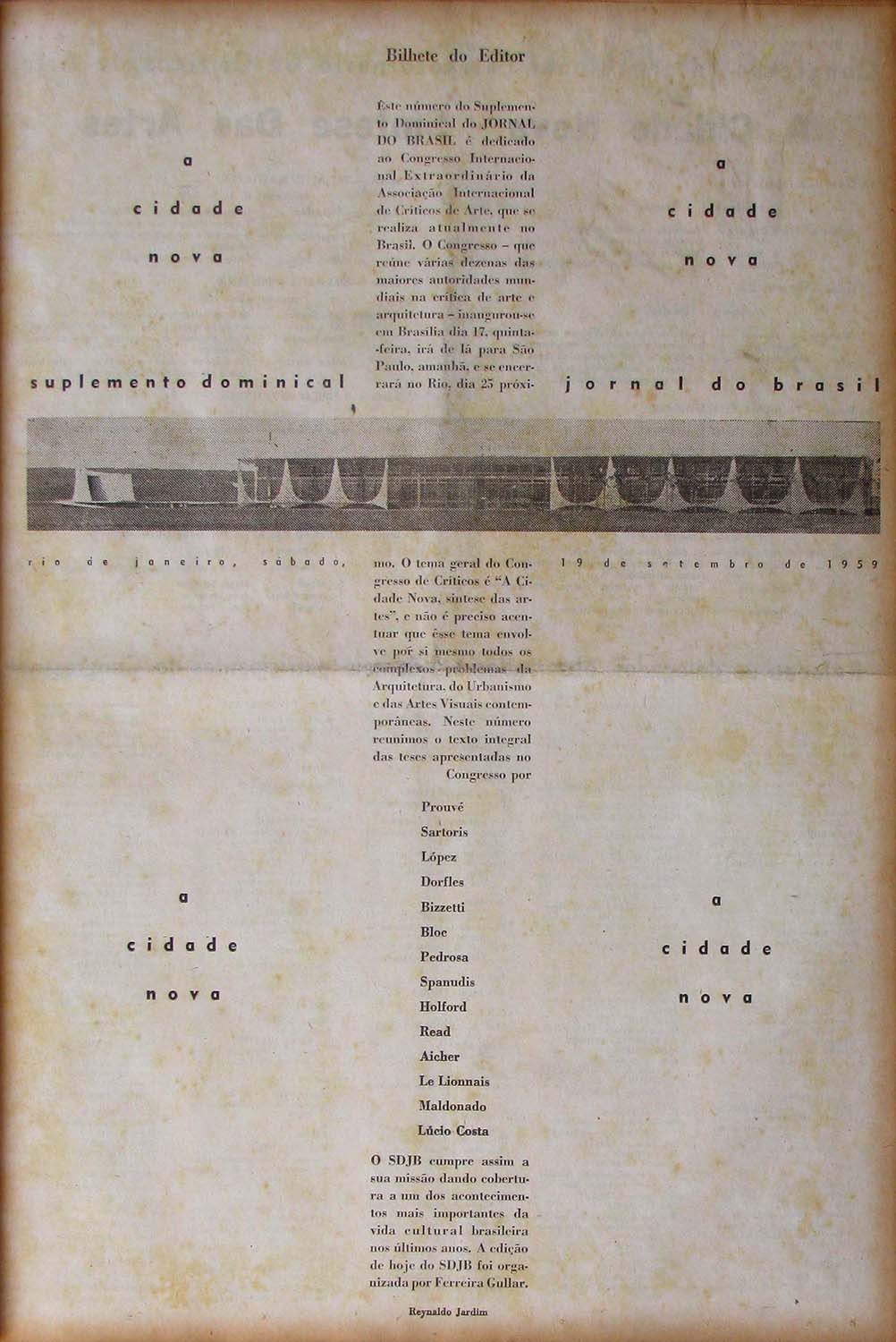
The September 19, 1959 issue of SDJB was dedicated to the Extraordinary International Congress of the International Association of Art Critics – AICA, which addressed the theme of "The New City, Synthesis of the Arts." The cover of this edition referred to Brasilia’s Master Plan, the country’s capital-to-be. A composition placing the Editor's Note vertically (a single text column centered on the page), cut orthogonally by a photograph of the Planalto Palace building. In the four empty spaces were the words that made up the title of the congress: "the new city,” repeatedly. Looking at this cover, we could say that the Supplement followed the cultural scene in both content and form.
On January 17, 1959, SDJB began to circulate on Saturdays.11 Initially, it had 12 pages; in December 1957, it was reduced to 8 and it remained in that format until May 26, 1961. On that date it changed to tabloid format and, on December 23, 1961, its last edition was published, without any information regarding its closure.
Gullar's theoretical texts describe Neoconcretism's interest in conceiving works that powered themselves when they came in contact with people, created spatio-temporal relationships, and addressed the question of art and life. The newspaper is a utilitarian object, yet the aesthetic care with which SDJB was created and its artistic value are undeniable.
"I can only edit by diagramming. Whatever I am going to edit, I take a blank paper and draw [...] In the time of the Supplement, I designed the pages and went to the workshop to implement them with the workers"
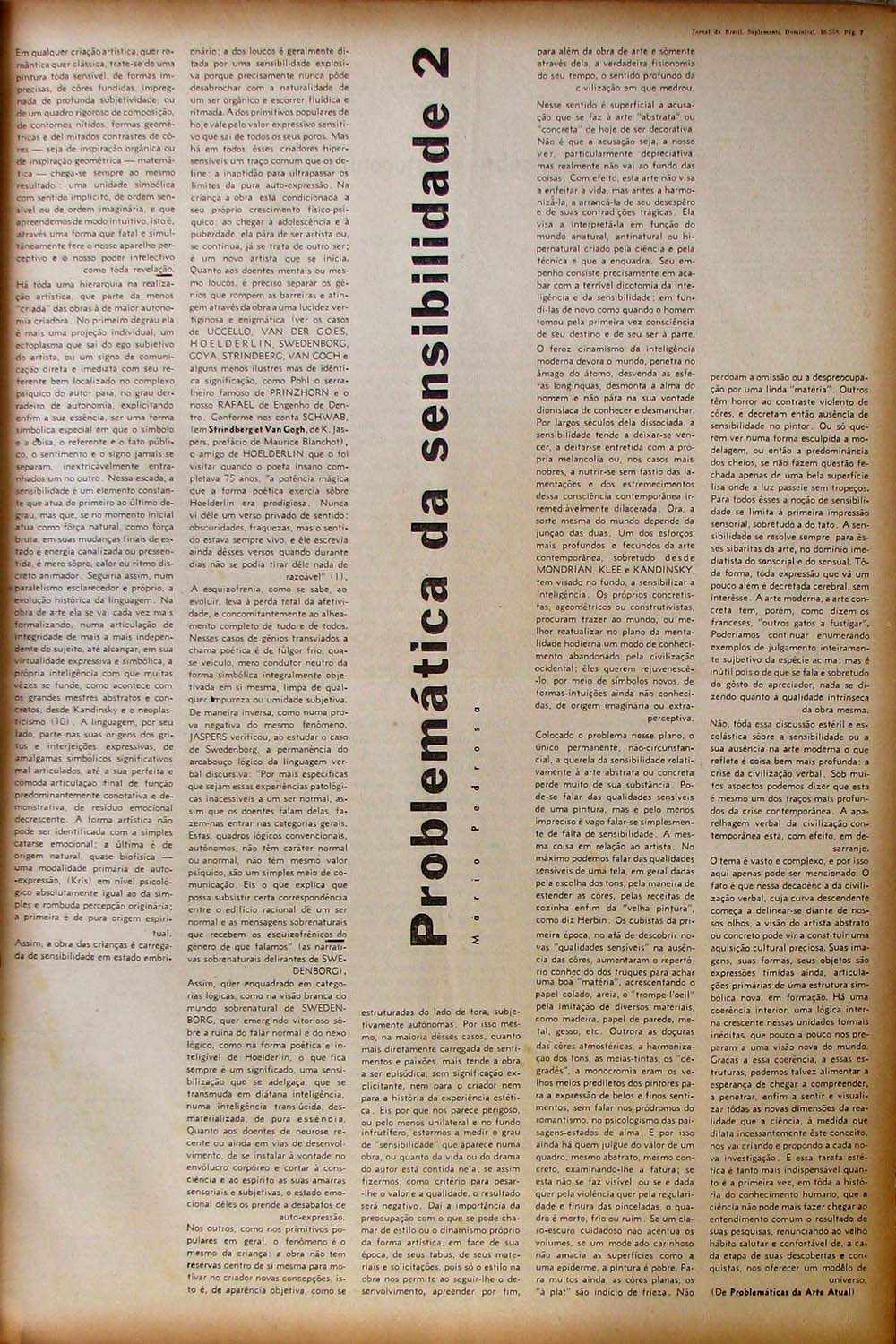

The elements that composed the design were square and rectangular text blocks, arranged horizontally or vertically, which gave structure to the page as they were ordered. These same elements were rearranged asymmetrically each week; this continuous experimentation—typical of neoconcretism—produced new pages.
Through the layout of SDJB, Jardim addressed two important matters for neoconcretism: figure vs. background and art vs. life. The work would not be represented before an illusory space but inserted into the real world of the reader. In the flat reality of painting, the background would not be something secondary: it would be transformed into an active presence. The void would be filled with space and also time since the subject’s experience with the work would take place in the actual time of the interaction.
By bringing his artistic intentions to the SDJB page, the continuous experimentation with its design, the structuring of the page, arranging and rearranging the same elements he used for building it, Jardim spread his creation in the local scene. This constructive synthesis, which ended in the diagramming of a utilitarian object invested with artistic value, allowed the neoconcretists to spread art into everyday life.
